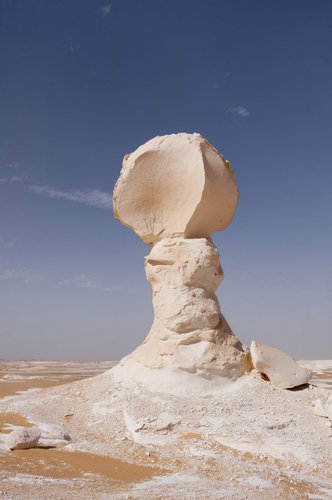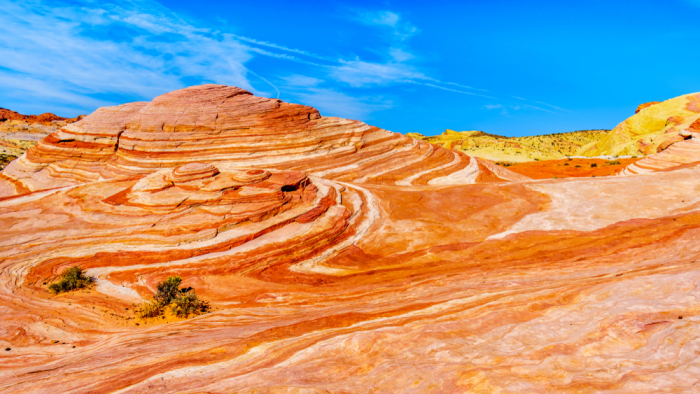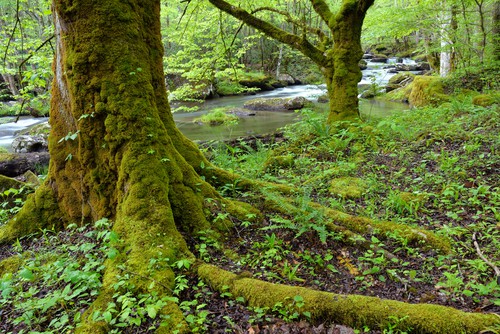Rocks can be hard-wearing and long-lasting but, over time, even solid rocks can break down and wear away. The wearing away of rocks is called weathering.
Heat, cold, rain and ice break the rock into tiny fragments that are carried away by the wind or rain. This movement of the tiny rock fragments is called erosion.

Some rocks are harder-wearing than others. You can see this if you rub a piece of chalk against a piece of granite. Bits of the chalk rubs off easily but the granite doesn't seem to wear at all.

There are different types of weathering: chemical weathering, physical weathering and biological weathering.
Chemical weathering
Rainwater often contains dissolved gases from the air that make it naturally slightly acidic. When this rainwater falls onto rocks it can react with the minerals in the rock and a chemical reaction occurs.
This reaction might make the rock softer or more crumbly than the original rock, causing it to wear away.
Physical weathering
Rocks can be weathered by physical changes. Temperature changes in the environment can cause rocks to expand (to get bigger) and contract (to get smaller). If this happens over and over, it can cause the rock to crack and break apart. This is often called onion-skin weathering.

Water can also get into the cracks in rocks and if the temperature is cold enough, will freeze. The water expands as it freezes causing the cracks to become bigger. This causes the rock to break apart over time. This type of weathering is called freeze-thaw action.
Biological weathering
Plants and trees often help to break up rocks. Sometimes seeds may fall into the cracks of rocks and start growing there. Plant roots can push apart these cracks as they grow, causing the rock to break up over time.

In this activity, we are going to explore what we know about rocks, weathering and erosion.








